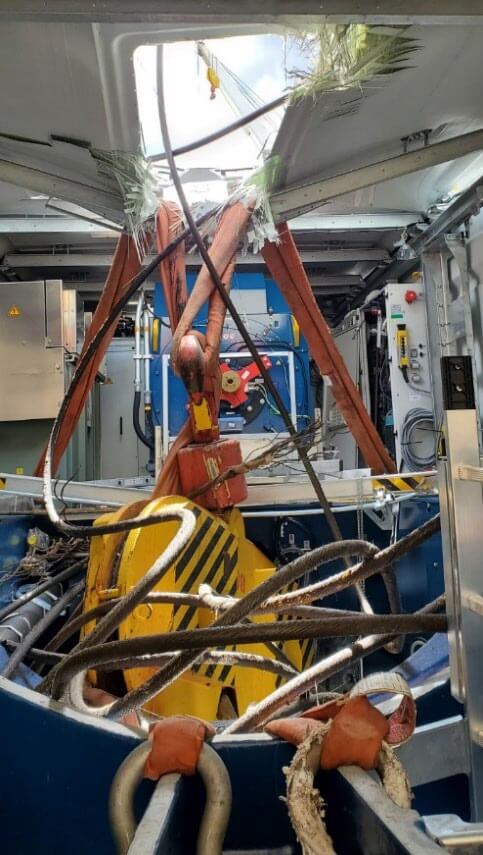NTSB: Corrosion Caused Heavy-Lift Hoist Failure

Undetected corrosion and wear caused a wire rope to fail during the hoisting of a wind turbine component aboard the heavy lift ship Thorco Basilisk last year, resulting in $3-5 million of damages, according to the National Transportation Safety Board (NTSB).
On July 23, 2022, a wire rope on a shipboard crane parted while the ship was offloading a 68-tonne wind turbine nacelle at the Greensport Terminal on the Houston Ship Channel. The failure caused the component to drop onto the vessel’s cargo hold tween deck, and the crane block punched through the top of the nacelle's housing. Although no pollution or injuries were reported, damages to the ship and the nacelle were estimated at $3-5 million.

Investigators found that the 1.5 inch wire rope had obvious signs of external corrosion and wear. Sections from either side of the location where the rope had parted exhibited “a significant level of external corrosion” with a severity rating of about 60 percent. However, the visible signs of external corrosion could not be fully seen until the grease on the rope was removed. The crew followed the common maritime industry practice of leaving the old grease on their wire ropes during relubrication maintenance ("slushing"), since removing the old dried-out lubricant would be impractical without specialized equipment.
While the hoisting wire rope was still within the standard 10-year service lifetime, NTSB determined that “the wire rope was near the end of its service life and probably should have been discarded.”
“Saltwater and humid ocean air cause corrosion of metals, presenting challenges for the maintenance of high-strength steel wire ropes on vessels. A deteriorated wire rope directly affects a crane’s ability to safely and reliably handle loads up to its rated capacity,” NTSB said.
Following the NTSB recommendations, vessel operator Auerbach Marine updated its maintenance schedule to require crane wire rope replacement every five years.
